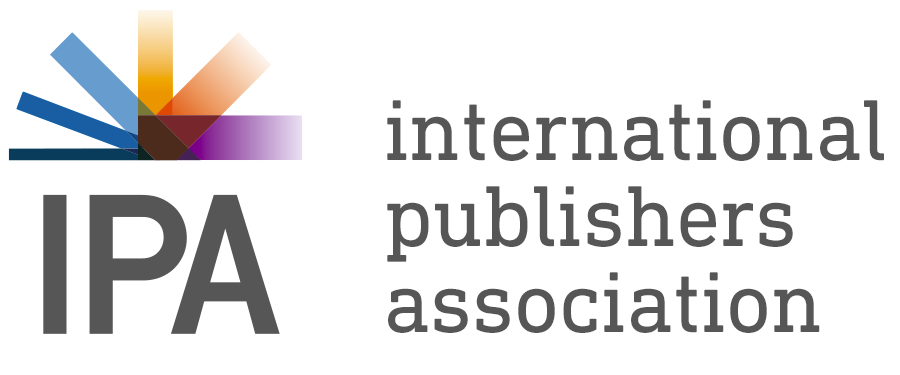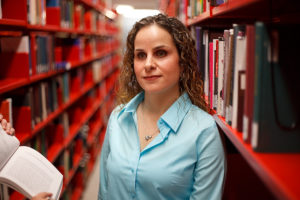James Taylor (JT): Tell us a little about NNELS
Daniella Levy-Pinto (DLP): The National Network for Equitable Library Service (NNELS) is a repository of accessible books for Canadians with print disabilities, and an advocate for accessible publishing and equitable reading. NNELS works to ensure readers with print disabilities can have access to the same content as all other readers, at the same time.
NNELS puts users at the centre, and builds capacity by employing people with lived experience of print disability, including blindness, low vision, and dyslexia, who provide their expertise as testers and consultants. Among other things, they conduct live demonstrations of what a poor reading experience looks and sounds like to a reader with a print disability, evaluate and write accessibility reports for vendor reading systems and library apps, and create screen reader tutorials. The expertise of people with print disabilities is key to creating awareness about accessibility, identifying and eliminating barriers, and empowering publishers and others to create content that works for everyone.
Working together with publishers and the NNELS team of Accessibility Testers, NNELS is helping publishers learn how to create more accessible ebooks and audiobooks, and working together toward an ecosystem that supports born accessible publishing. NNELS hosts an annual Accessible Publishing Summit, bringing together people from all areas of the publishing and distribution worlds, from editors to librarians, to find out what needs to be done and how we can work together to advance the state of accessible publishing in Canada. NNELS is focussed on building connections in order to demystify accessibility and make it more relatable.
JT: What does it mean to you to win the Accessible Books Consortium Excellence Award?
DLP: It is a great honour for NNELS to be recognized as a leader in improving the accessibility of ebooks or other digital publications for persons with print disabilities. As many members of our team have lived experience of a print disability, they understand first-hand the impact of barriers to reading. It is very meaningful for our team to work towards the elimination of such barriers.
We are humbled to be selected from among the group of finalists in the initiative category, organizations doing excellent work towards the common goal of accessible publishing and accessible reading. We are delighted to join previous recipients of this award, and are proud to be recognized among leaders that NNELS has been learning from since we began in this journey of accessible publishing.
This is an exciting time for accessibility. It is wonderful to witness publishers realize that by taking steps to build accessibility features into their digital content, they are creating a better product for everyone. This award further motivates us to continue our efforts towards the goal of a fully inclusive and equitable reading landscape in Canada and beyond.
JT: NNELS was launched in 2013 – how has your work and attitudes to accessibility changed since then?
DLP: In 2013, NNELS began as a repository of patron-requested accessible format books made available through a network of Canadian public libraries. Our motivations to address accessibility barriers derive directly from our core mandate to produce accessible formats for readers who are print-disabled. The initial work for NNELS was all about remediation. NNELS built capacity, knowledge and expertise around accessible file creation. And it has used that expertise and knowledge to build capacity among publishers and educate content creators about how to incorporate accessibility from the beginning.
NNELS has undertaken various initiatives aimed to ensure services and materials for users with print disabilities are fundamentally informed by the accessible by design principle. An integral goal of this work is to create awareness about accessibility and usability among multiple stakeholders. The overarching motivation for NNELS is to create an equitable library landscape, ensuring that there is access to reading for people with print disabilities and that they are regarded like any other library patron. NNELS expanded its scope from being only an alternate format producer, to working directly with publishers and other stakeholders towards a shift to a born-accessible paradigm, including all aspects of book and content production. The scope and change in attitude regarding accessibility has to do with the recognition that accessibility is everyone’s responsibility, and NNELS is acting on that principle, using its expertise to support as many components of the supply chain as possible. Everyone has a role to play, and full accessibility needs everyone to do their part.
JT: Canada seems to be a leader in tackling accessibility issues with the government dedicating funds to support the book sector. Is that a fair assessment and if so why do you think there is that commitment?
DLP: The Government of Canada has a commitment to improving accessibility for Canadians with disabilities so that they may fully participate in society. The approach and commitment to accessible publishing is informed by Canada’s accession to the Marrakesh Treaty, by research in this area, and by an understanding that advances in technology make it possible to shift to a paradigm in which content can be make accessible from the start; accessibility is thus a collective responsibility, and not only that of specialized organizations.
In 2016, Canada became the twentieth signatory to the Marrakesh Treaty, allowing it to enter into force. While the Marrakesh Treaty aims to allow for more of the world’s books to be made available in formats accessible to people who live with print disabilities, it also emphasizes the importance of copyright protection and maintaining a balance between the rights of authors and the larger public interest by the treaty’s contracting parties. In 2018, Employment and Social Development Canada convened a Working Group on Alternate Format Materials for Canadians with Print Disabilities, to come up with a strategy for producing more print materials in Canada in accessible formats, with the participation of various sectors (mostly not-for-profit and public), including the publishing industry, library associations, alternate format producers, and consumer organizations. In 2019, the Government showed its commitment to implementing a strategy that would ensure the sustainable production and distribution of accessible reading material over the longer term. With an investment of CAD$22.8 million over five years, they are supporting Canada’s independent book publishing industry ability to increase their production of accessible books for persons with print disabilities.
The prioritization of accessible publishing and accessible reading has to do with recognizing that accessibility is everyone’s responsibility, and that everyone, including the government, has a role to play.
JT: Are there still misconceptions about tackling accessibility issues?
DLP: There is a lot of information out there on accessibility and accessible publishing, which can be intimidating for those who are new to this space. There is complex code to learn, intricate steps to take, new programs and software to learn, and for busy publishers, this can seem simply overwhelming.
But, while publishing accessibly can initially feel overwhelming, there are many little things that can be done to improve the accessibility of books, digital content, and tools to access such content. In our work, we’ve found that there are many small things that publishers and others can do in order to start incorporating accessibility into their production process right away. It is not necessary to know everything before getting started. And, it is possible to go step by step, working to incorporate more accessibility features into publications over time, not all at once. Taking even one step, like adding image descriptions, or ensuring that text content is not presented as images, will make for a more accessible book, and every little bit counts.
An initial investment in accessibility means that publishers are then in a position to produce ebooks that are accessible. Once established, best practices for accessibility help publishers become much more cost effective, by building accessibility into all their content, so that accessibility is there right from the start, and the rest is business as usual.
JT: What are NNELS plans for the future?
DLP: NNELS will continue to work with publishers and other stakeholders, conduct accessibility audits of ebooks, audiobooks, and websites, including concrete suggestions for improvements, create resources to help publishers and others advance their knowledge of the different pieces of the work needed to achieve an accessible publishing landscape, and train publishers and others through workshops and webinars.
Beyond expanding our collection with content that our readers want in accessible formats, NNELS aims to get our collection into the hands and devices of as many readers as possible. This includes enhancing the digital literacy of readers with print disabilities, by continuing to develop tutorials for all kinds of formats and devices, and working with libraries and other partners to create awareness and provide training and resources for fully accessible mainstream library services. Our goal is to ensure everyone, regardless of ability, can read in the way that works best for them. NNELS also aims to continue offering quality employment for people with print disabilities and rely on their expertise and experience.
NNELS will continue to advocate to move the accessible books cause forward by hosting annual Accessible Publishing Summits, which bring together Canadian and international stakeholders to address specific questions and problems in accessible publishing, and to find solutions and contribute to meaningful change at the publisher and library level.
JT: Are there any particular experiences you would like to share or do you have any messages for other initiatives or publishers ?
DLP: Part of the solution to the lack of accessibility is a cultural change. Accessibility should be considered the baseline, instead of as an optional feature. It’s all about thinking beyond the “typical” user and embracing new ideas to produce a seamless experience for all users.
When inclusion is a consideration from the start, accessibility can become an organic part of a workflow. It can mean increased efficiency and a superior product, while at the same time minimize remediation costs if accessibility barriers remain. And when publishers create born-accessible books and content, they are contributing to an equitable reading landscape, and ensuring that all readers will be able to access the books they want in the formats they need.
You can watch the award ceremony here.
Watch the Frankfurt Book Fair Session: Accessibility Now – Will you be ready for the European Accessibility Act in 2025?
Read our write up of the session here.

